Why has it been a bumper year for British berries?
The sunny, yet wet summer might have been a dampener at the time, but the resulting autumnal berry haul is a feast for mice and men, says John Lewis-Stempel.
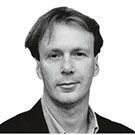

From holly in the field hedge to guelder rose at woodland’s edge, from rowan on the moor to buckthorn beside the shore, the land is bursting with autumn fruitfulness. By all anecdotes and estimations, it is a bumper year for berries, a ‘soft mast’ year, when the berry-bearing trees and bushes produce a glut, when the hawthorn cascades red with haws and the bramble is clotted with blackberries. The sloes are as big as grapes.
The wild berries of Britain rarely fail, but, every so often, there comes a bonanza crop — as we've seen in 2023. The reasons for such a berry rush are not fully understood (Nature likes to keep some secrets close to her chest), although weather and Darwinian continuation of the species have a role. A summer such as the last, both sunny and wet, enables berries to ripen and swell; the sheer number of fruits increases the odds of their seeds being distributed via the faeces of the gorging birds and beasts. Yet the making of abundance takes a toll on tree, bush and shrub, so years of über-bounty are occasional, not habitual.
Producing a plentitude, however, is insufficient for survival. A species of berry must stand out from alternatives if it is to attract a passing redwing or a mooching wood mouse. Consequently, each fruit has its architecture of temptation, its own design of enticement. The berries, ‘haws’, of hawthorn are the seductive scarlet of a 1950s starlet’s lipstick; the sophisticated, elongated hips of the wild rose are proffered like precious jewels in a Bond Street window. The sunlight glints on the blackberry as if it were a ballroom glitter ball. Bryony hangs as an unclasped necklace of green and red. And is there any fruit more sophisticated than the pink, four-lobed spindle berry?
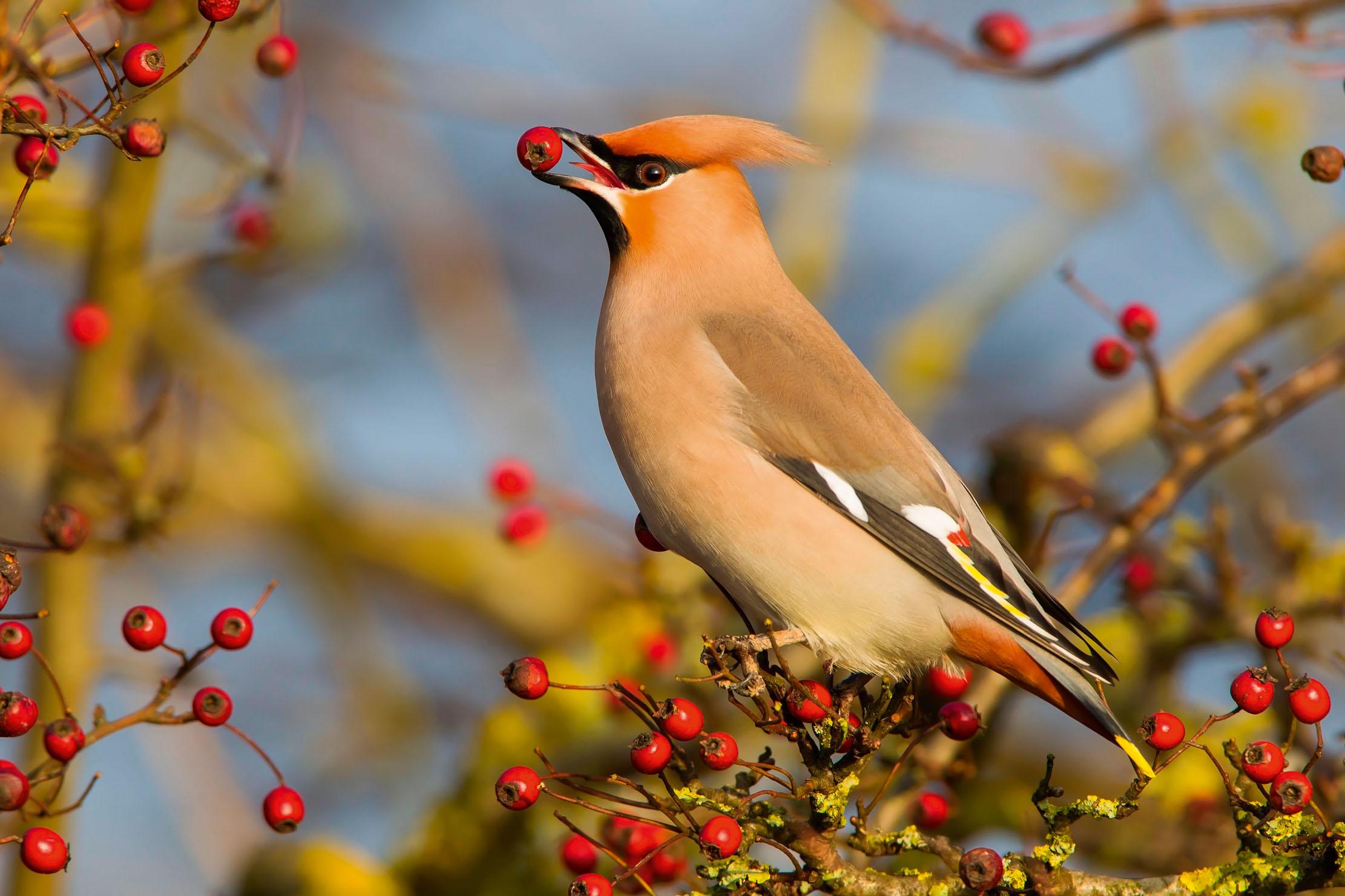
The delight of autumn fruit is hardly confined to sight. There is the small, understated pleasure of the sealing-wax smoothness of rosehip between finger and thumb, and the revelation of the lustrous purple of sloe after the white ‘bloom’ is rubbed away.
To the prosaic. Wild berries are foodstuff. They have individual taste; hawthorn has something of avocado, whereas sea buckthorn, the day-glo orange of life vests to the eyes, is equally startling on the tongue, being candy sour. Presumably, the creatures of the countryside have distinct gastronomic fancies; wax-wings, certainly, are mad for rowan and haws.
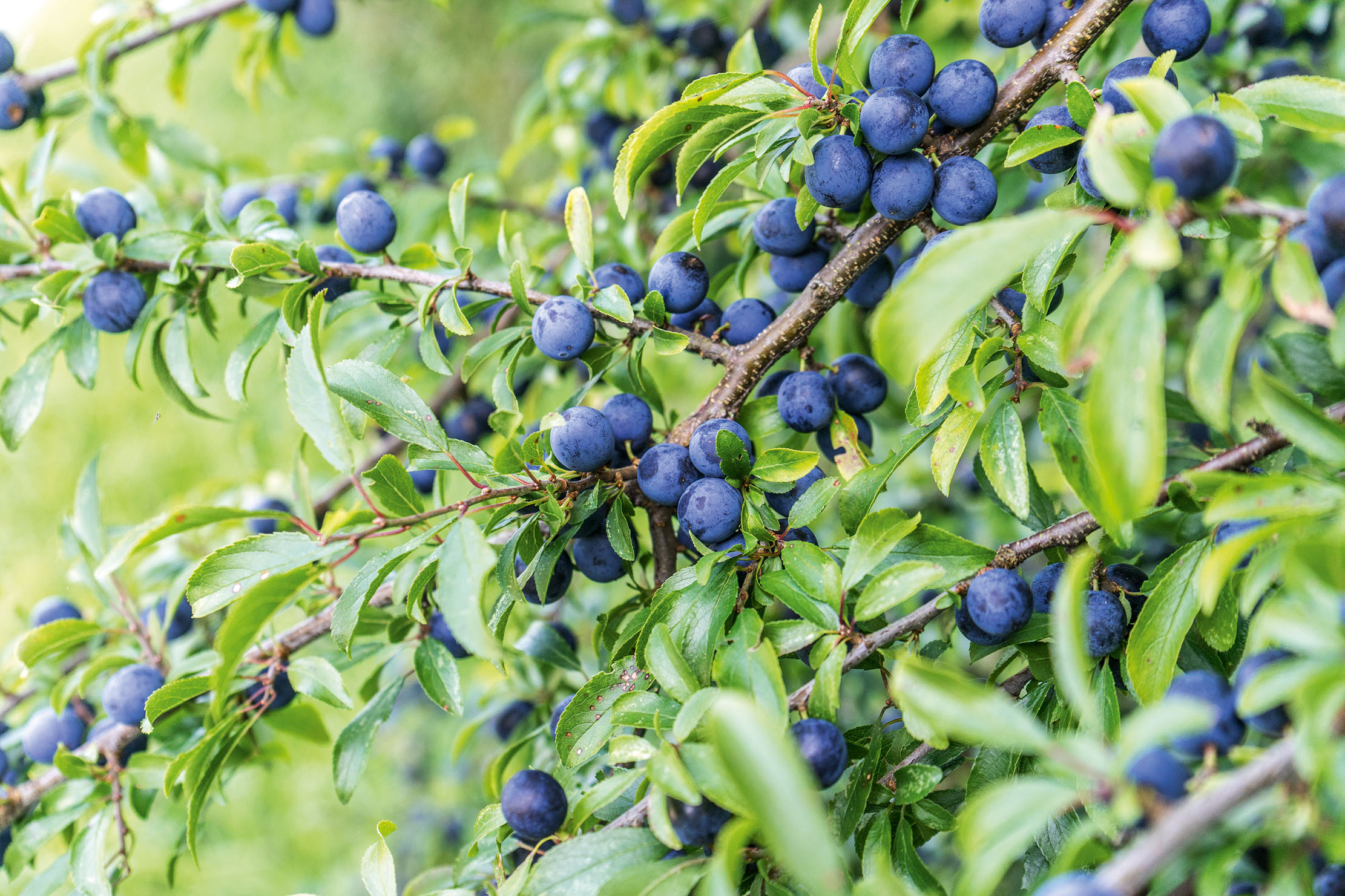
If the wild things enjoy a bigger choice from the native berry buffet — black bryony, Tamus communis, is pure poison to humans — there remains feast enough for us. British berries can also be a tonic for our health. Is it not mad to import açaí berries (9.1mg per 100g of vitamin C) from the Amazon rainforest, ignoring our own native superfruit, the rosehip, which boasts 426mg?
Surely, too, a walk along the lane, when the sky is blue and blinding and there is a Klimt-gold gilt to the leaves, to pick blackberries for blackberry cordial or bramble jelly, is more pleasurable than pushing a trolley around the supermarket aisles?
Exquisite houses, the beauty of Nature, and how to get the most from your life, straight to your inbox.
If the childhood pick-me-up of rosehip syrup is the obvious use of the fruits of the wild rose, what about nyponsoppa, Swedish rosehip soup? Pureed rosehips, with the internal ‘hairs’ removed, can be baked in the oven for a fruit chew liked by both children and a parent’s conscience. Haws make a jelly to accompany meat or herbal tea to alleviate hypertension. Rowanberry jelly is the stuff to serve with game and no Christmas is complete without sloe gin. Food and drink for free: what’s not to like about autumn’s berry generosity?
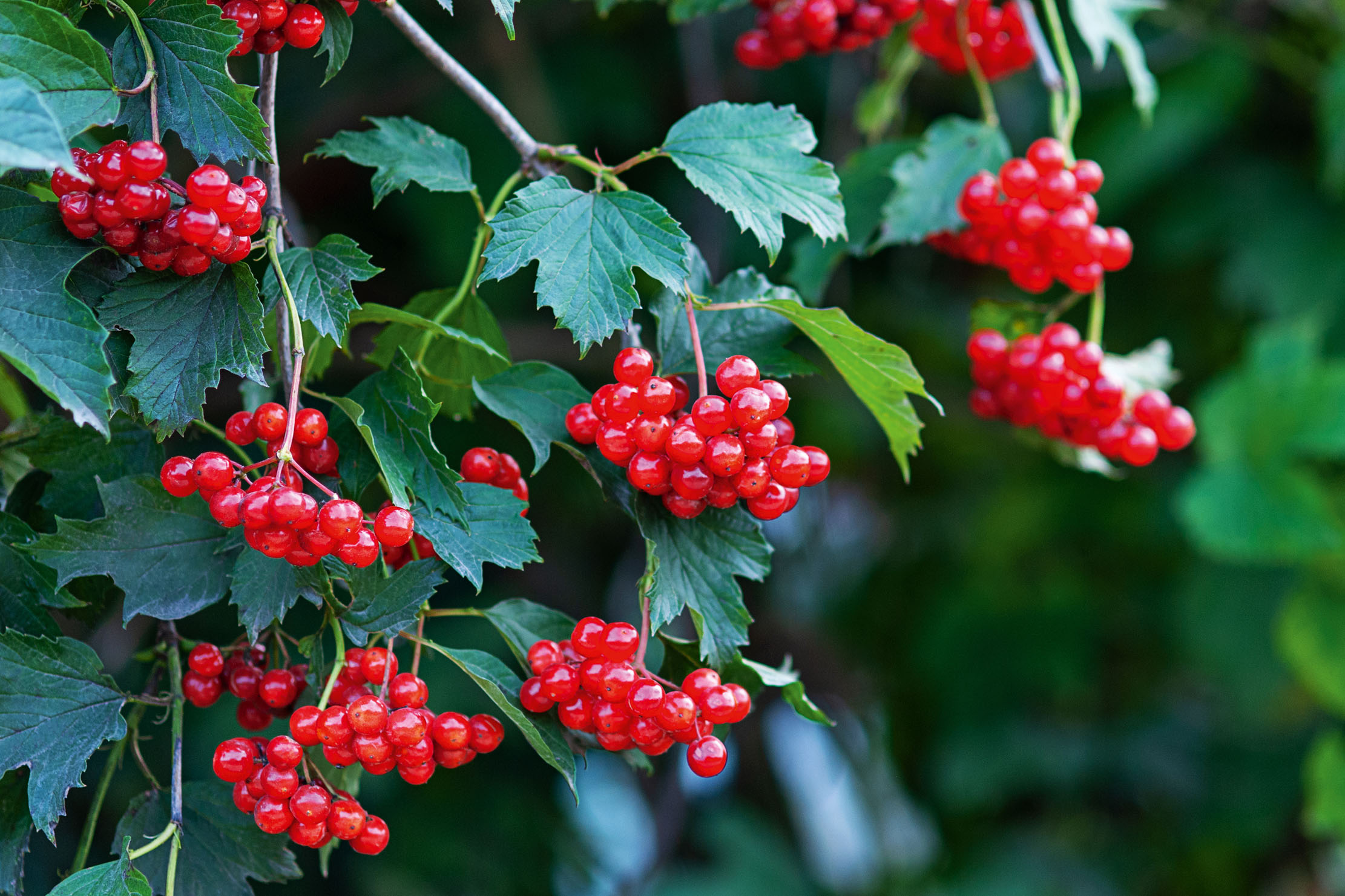
Admittedly, there are snags to foraging. It is a truism of Nature that the more delicious the berry, the more heavily it will be guarded by ‘dags’. The inch-long spines amid the sloes resemble the spikes of medieval maces. One also must beat the birds to the bush. According to country wisdom, the first frost of the year softens and sweetens sloes, hips and haws. By a primordially ordained synchronicity, the first frost will coincide with the arrival of Viking hordes of rapacious birds. Redwings and fieldfares will strip a hawthorn naked. Already, badgers, deer, wood mice, red squirrels, foxes, voles, pine martens, slugs and fruit moths (among others) will be taking their fill.
After the stomach, we may consider the berried boughs for the soul. Decorating the home with holly, rowan and hawthorn to banish the winter blues is a rite as old as the Neolithic cave. Berries were symbolic magic, anticipations of fertility, and red was the colour to stave off evil (doubtless because red is the hue of blood, which is life). As the medieval Scottish incantation has it, ‘Roan-tree and red thread/Haud the witches a’ in dread’. In the Christian tradition, the haemoglobin-red of berries came to be associated with the blood drops caused by Jesus’s Crown of Thorns, shed for humanity’s salvation (see the carol The Holly and the Ivy).
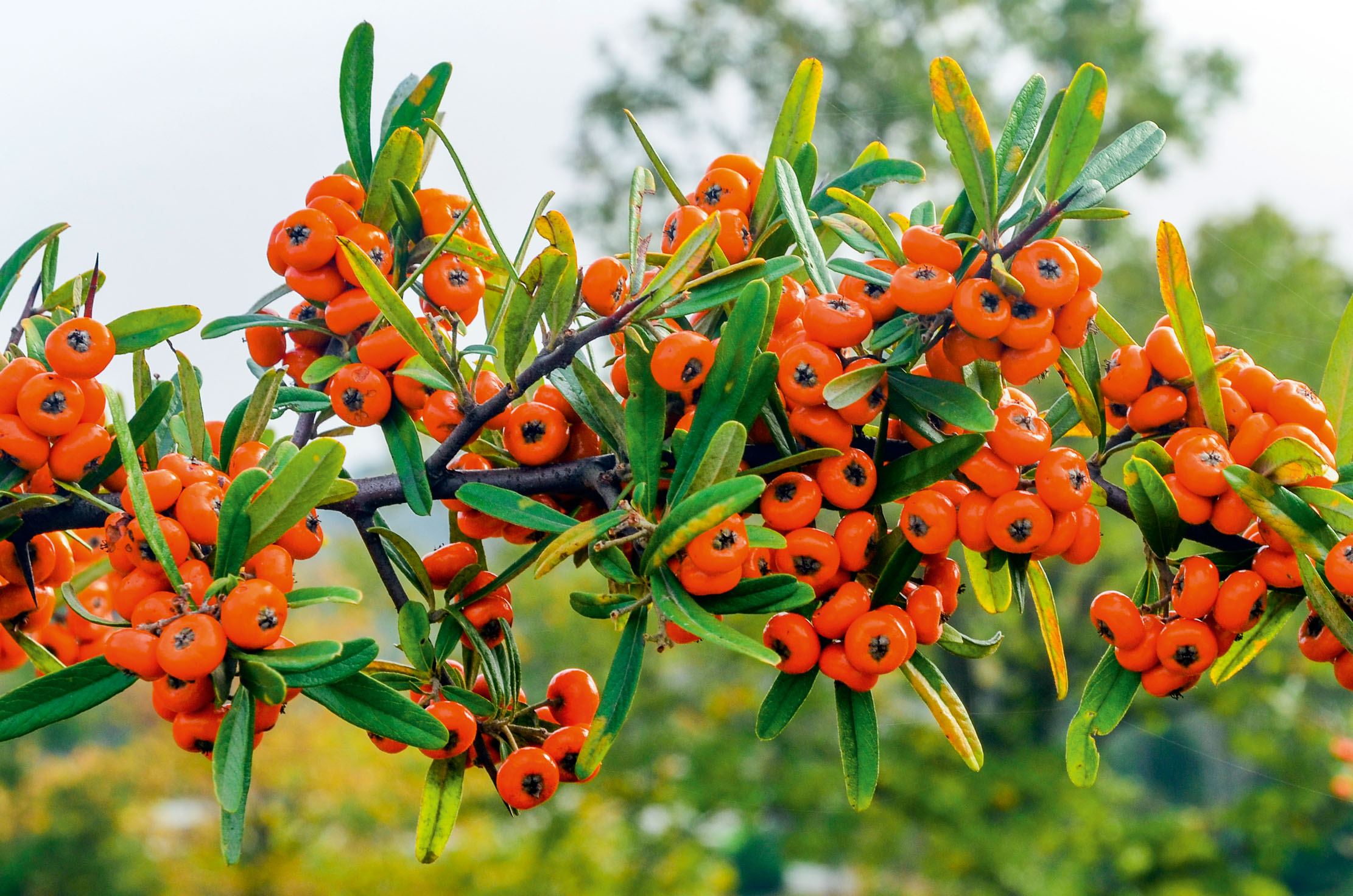
Preserving berried branches for Christmas or Winter Solstice is something of a dark art, but timing is all: cut laden boughs as soon as berries achieve full colour and firmness (over-ripeness is your rotting enemy) and before the birds come a-visiting. A necessary accessory is a mousetrap. The rodents are drawn to berries as surely as moths to a flame. After snipping your bough, place spindle, hawthorn and rosehip in a cool, dark place to dry.
As for those Christmas essentials, holly and ivy, place in a solution of one part glycerine and two parts warm water. (Glycerine replaces some of the water molecules in the leaf cells, preventing loss of colour and halting decay.) Leave for a fortnight in the crucial cool, dark place.
The old-time gardeners, who had magic in their fingers, used to preserve holly boughs in moist sand in a cold frame. Those stooped, tweed-jacketed figures of yesteryear also set great store by reading the signs of Nature to divine the weather. One of their favoured folkloric forecasts was ‘Many haws, many snaws’. Wrap up for a cold winter.
